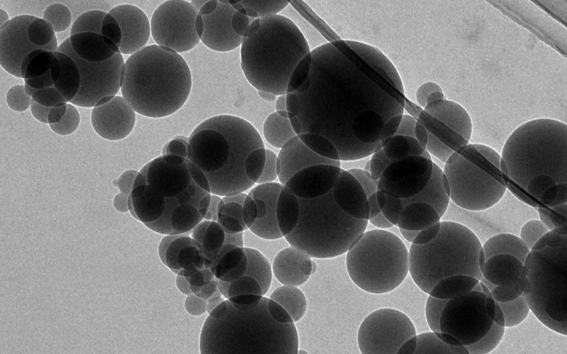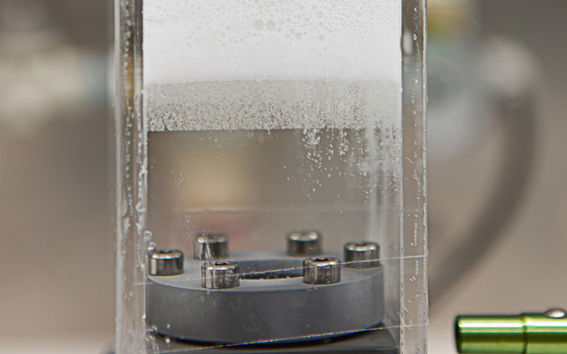Biobased Colloids and Materials (BiCMat)

The BiCMat group is based in the Department of Bioproducts and Biosystems and we are an active member of the broader Materials and sustainable use of natural resources key research area at Aalto University. Our research group consists of scholars at various stages of their careers, from MSc. students to Post-doc researchers. In addition, we continually host visiting scholars from other academic/research institutions around the world.
Our research focus:
Our research focus is on finding competitive alternatives to fossil materials through research into bio-based materials at different size scales, mainly those displaying large interfacial areas such as fibers (micro/nano fibers), fiber networks, particles and colloidal systems. We are interested in:
Ligno-nanocellulose and bacterial cellulose:
We utilize novel cellulosic materials from various sources to develop high value-added applications.
Multiphase systems:
We study the fundamental and utilization aspects of multiphase systems, such as dispersions, emulsions, foams, membranes and gels.
Multiphase systems have a large variety of functionalities in the application of textile products, light-weight materials, water treatment, encapsulations, etc. Current environmental concerns have prompted an increasing demand for bio-material-based multiphase systems, such as foams, emulsions, aerogels. Our research interests involves revolving the colloidal-related mechanisms in fiber-based foams for papermaking. Also, we explore the roles and capabilities of (ligno-)cellulosic materials (e.g. (lingo-)cellulosic fibers, (lingo-)nano-cellulose, etc.) in a multiphase system.
Films, filaments and hybrid materials:
We employ the versatility of lignonanocellulose and cellulose derivatives in novel film, paper and filament structures in combination with other nano- and functional materials.
Bionanomaterials are often thought to be difficult to process and limited in functionality. To enable feasible processing, we work on paper, film and filament structures which can conveniently fit into existing industrial processes. Furthermore, we see papers, films and filaments as useful model structures for demonstrating novel functionalizations.
Even though biomaterials can natively have a limited functionality, they typically have a promising chemical versatility. We employ this versatility for new purposes, such as water-resistant, thermoformable, electrically conductive, luminescent or antibacterial cellulose. With this work, we target applications that will be important for tomorrow’s society, such as composite materials, packaging, energy harvesting and rapid diagnostics.
Lignin:
We search for new, more valuable application areas for lignin, for example nanoparticles or coatings.
Lignin is the second most abundant natural raw material and nature’s most abundant aromatic polymer, which can be found in plants. Lignin is generally obtained from black liquor as a waste from pulp industry in large quantities. Although much of the lignin produced by pulp industry is currently consumed as a fuel, there are other, higher value added applications, such as carbon material precursor, emulsifier, coating, filler or substitute for metal/inorganic nanoparticles. We study these new areas for lignin utilization, envisioning lignin’s transition from waste into a valuable raw material.
Proteins:
We research the interactions between proteins and polysaccharides and thus develop materials combining these components.
Proteins, natural and renewable biomolecules, perform a vast number of functions that show great potential in various challenging applications. We study the functional properties of proteins in molecular and surface interactions, crosslinking, foaming, adsorption and separation processes. Specific areas of interest include the interactions between proteins and polysaccharides and materials combining these components. Through this work, we are aiming to improve the formability of cellulose-based materials, create antibiofouling surfaces and other functional biointerfaces relevant to the medical, biotechnological and food fields.
Bioactive cellulose:
We capitalize on the biocompatibility of cellulose in medical applications through modifications with antibodies, enzymes and other bioactive molecules.
We have introduced conjugation of short peptides to nanocelluloses for low cost and disposable sensors as well as supports for detection or separation of bioactive molecules. We aim at developing sustainable bioactive materials that can be safely disposed or regenerated. Specific topics that have been developed in our group include
- immunoglobulin G binding and detection
- heparin, Avidin-Biotin and other complexes
- affibodies and C-reactive proteins
- role of ligand spacer on passivation, binding, kinetics, and mass transfer
- rapid immunoassays and diagnostics
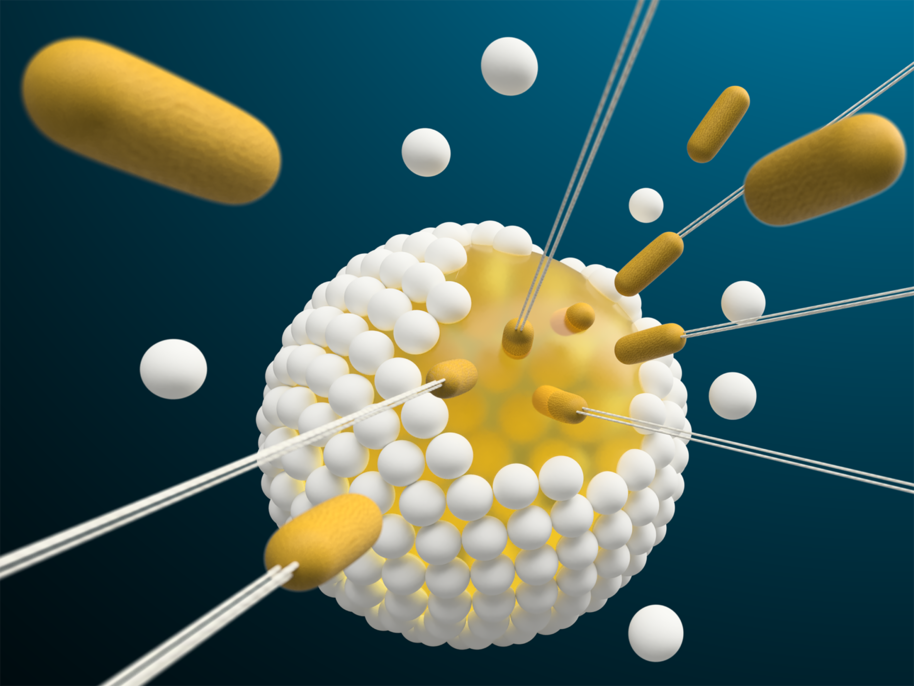
We work closely with:
FinnCERES
FinnCERES, competence center for materials bioeconomy, is a Flagship for our sustainable future.

The LIBER Centre of Excellence
LIBER aims to create dynamic and soft hybrid materials with a capability to learn, adapt or response to the environment. LIBER combines eight research groups with expertise on molecular self-assembly, soft robotics, surfaces and interfaces, genetic engineering of proteins, biotechnological production of engineered biomolecules, and computational modelling.

Aalto Networking Platform
The Aalto Networking Platform brings together research expertise across departments, supporting collaboration both inside and outside of Aalto.


Honors and awards
ERC Advanced Grant recipient
2018 Anselme Payen Award, the highest recognition in the area of cellulose and renewable materials
BiCMat is a part of Academy of Finland's Centre of Excellence in Molecular Engineering of Biosynthetic Hybrid Materials (HYBER, 2014-2019)
In 2015, Orlando Rojas received TAPPI Nanotechnology Division Technical Award and IMERYS Prize

Prof. Orlando Rojas, head of the research groupThrough our research we find competitive uses of renewable biological resources.
BiCMat members
Here you will find the individuals who are part of the Biobased Colloids and Materials (BiCMat) research group.

Related content:
Follow us:
Research group related news:
Multidisciplinary project 'Shimmering wood' shortlisted in Fast Company’s 2021 World Changing Ideas Awards
Shimmering wood is an innovation of Noora Yau and Konrad Klockars.

Academic co-operation on the boreal forest belt launched to accelerate innovation and adoption of bio-based solutions
University of British Columbia (UBC), Aalto University and VTT are joining their strong expertise on bio-based materials by launching the Boreal Alliance. The collaboration is realized via the Finnish FinnCERES Flagship and the BioProducts Institute at UBC.

Scientists use bacteria as micro-3D printers
Technique creates highly customised structures that could be used in regenerative medicine

Parallel paths: Designer and materials scientist conjure up glimmering colours out of wood
Designer Noora Yau and materials scientist Konrad Klockars have used wood to conjure up a colour, which is transparent yet glows like a copepod in shallow water. The pair’s good chemistry and open attitude towards asking silly questions is a great help in their work.

Precision solutions for healthcare
Biodesign Finland projects utilise biomaterials to repair tissue damage and support the recuperation of mental health patients with environmental design. Identifying needs correctly forms the point of departure for all this.
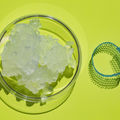
Hollywood costume design goes sustainable
A textile artist sees natural materials as the future for costumes in television and film.

Material manufacturing from particles takes a giant step forward
Tiny fibrils extracted from plants have been getting a lot of attention for their strength.

Crab-shell and seaweed compounds spin into yarns for sustainable and functional materials
Biobased fibres are made from two renewable marine resources and with promise in advanced applications, in wovens and medical materials, among others. The threads draw strength from the crab chitin component and flexibility from seaweed alginate.
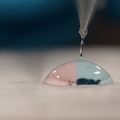
Developing individualised biomaterials for medical treatment
New types of biological mesh can also be used in treating gynaecological prolapses, hernias and urinary incontinence.
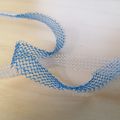
The combination of plant-based particles and water forms an 'eco' super-glue
In a collaboration between Aalto and other research institutions, a new, ecological adhesive has been developed that rivals superglue in strength
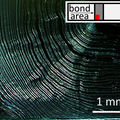
Wood-based yarn captures hormones from wastewater
Hormones and other pharmaceuticals ending up in bodies from natural waters are a globally significant environmental problem.
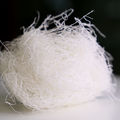
Five ways biomaterials could improve your health
Wood is a source of many healthy agents

New biomaterials and their market potential are at the centre of interest in the United States
How can bio-based materials be adopted as an alternative to synthetic plastics on an industrial scale? Is it possible for environmentally friendly textile production to be profitable?

The next material revolution will start in the forest
Plastic straws and utensils will soon be history but they will not be missed, as something much better will replace them.

Aalto University and VTT launch a major innovation ecosystem aimed at doubling the value of forest industry
Aalto University and VTT Technical Research Centre of Finland signed a collaboration agreement on the CERES flagship programme.

ERC Advanced Grants for Peter Liljeroth and Orlando Rojas
The European Research Council (ERC) has awarded their €2.5-million-each Advanced Grants to Aalto University professors Peter Liljeroth and Orlando Rojas.

Anselme Payen Award to Orlando Rojas
Awarded in 2018, Rojas received the medal and honorarium at the American Physical Society's Cellulose and Renewable Materials Division 2019 Spring meeting in Florida

A simple method developed for 3D bio-fabrication based on bacterial cellulose
Bacterial cellulose can be used in food, cosmetics and biomedical applications, such as implants and artificial organs.
Professor Orlando Rojas to receive the prestigious Anselme Payen Award
The award is one of the most important and internationally recognized awards in the field of cellulose and renewable materials.

Professor Orlando Rojas received 2015 Nanotechnology Division Technical Award and IMERYS Prize
TAPPI announced 2015 Nanotechnology Division Technical Award Winner
Research group related events:
FinnCERES Public seminar: Fibre and Beyond
Join us to explore some of the latest discoveries, innovations and applications in the world of bio-based materials. Our experts as well as guest speakers from Boreal Alliance will present exciting news from the field of wood-based bioeconomy.
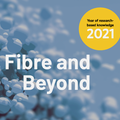
FinnCERES: Will the Bio-Bubble Burst?
Will new EU guidelines and directives on microplastics and single-use plastics threaten the future of new bio-based materials? What is the general atmosphere in EU countries on the use of forest biomass? Join the FinnCERES event to learn more!
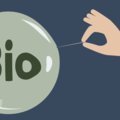
Capturing microplastics and pharmaceuticals from waste water
Hormones and other pharmaceuticals ending up in bodies from natural waters are a globally significant environmental problem.
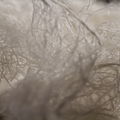
Shimmering Wood by Structural Colour Studio
Nature’s brightest colours – like those found in peacock feathers or butterfly wings – are created through microscopically small nanostructures.
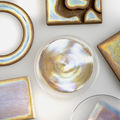
Solar energy through ChemisTree
Is it possible to use trees in electricity production? Surprisingly, yes, it is! Transparent cellulose films enable greater efficiency of solar cells through their haze effect.

Naturally Dramatic
Sustainable costume design is still in its early days. Despite efforts to move to 'greener' processes, stage and film productions still make costumes in traditional ways with little regard for their impact on the environment or employees.

Latest publications:
High-fiber content composites produced from mixed textile waste: Balancing cotton and polyester fibers for improved composite performance
Strong Association between Proanthocyanidins and Polysaccharides in the Cell Walls of Western Redcedar Bark
Wood Biomolecules as Agricultural Adjuvants for Effective Suppression of Droplet Rebound from Plant Foliage
Bioinspired root-nacre synergy enables low-cost high-strength soy protein wood adhesives
Dual crosslinked poly(vinyl alcohol)/starch/oxidized-cellulose nanofiber hydrogels with self-healing and antibacterial effects
Electrospun polycaprolactone membranes functionalized with nanochitin for enhanced bioactivity in localized cancer photodynamic therapy
Influence of magnetic nanoparticles on the mechano-magnetic response of wet-spun sodium alginate-nanocellulose filaments
Functionalizing Lignin-Based Nanofiber Electrodes with Gold Using Electrochemically Assisted Aqueous Reduction
Starfish-Inspired Synergistic Reinforced Hydrogel Wound Dressing: Dual Responsiveness and Enhanced Bioactive Compound Delivery for Advanced Skin Regeneration and Management
Hybrid Nanofiber-Based Atmospheric Water Harvesters: Sunlight-Driven Operation in Low-Humidity and Low-Illumination Environments
Find us at:
Vuorimiehentie 1
Aalto Bioproduct Centre

School Latest News:

Can technology save us in the sustainability transition? Five things everyone should understand about techno-optimism
Academy Research Fellow Johanna Ahola-Launonen warns us against solving the sustainability crisis solely through technology – and explains why we are so keen to do just that
Researchers Unlock a Stronger, Greener Way to Bond Wood: Finnish pulp fiber could be used to bond wood for the construction industry
Researchers at Aalto University have developed a groundbreaking wood bonding method using primarily pulp fibers from Finnish forestry. The resulting bonding interface is twice as strong as natural wood while highly resistant to water. This breakthrough could transform sustainable construction by reducing reliance on petroleum-based adhesives.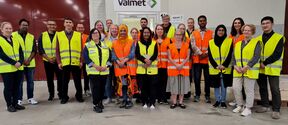
TexirC project meeting held at Valmet’s Fiber Technology Center
August 18, 2025 – The results meeting of the TexirC project took place at Valmet’s Fiber Technology Center.
Annual meeting of textile chemistry group held
August 8, 2025 – The Textile Chemistry Group convened its Annual Meeting on Friday, August 8, bringing together researchers, doctoral candidates, master’s students, and interns to share their latest work in advancing sustainable textile technologies. The meeting was inaugurated and chaired by Professor Ali Tehrani, Head of the Textile Chemistry Group, who welcomed all members and emphasized the importance of collaborative research in shaping the future of the textile industry.Events:
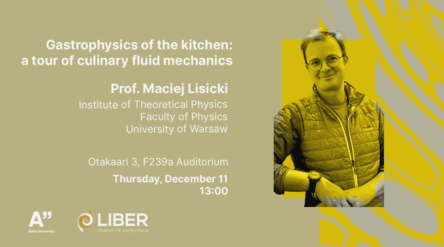
Gastrophysics of the kitchen: a tour of culinary fluid mechanics
Prof. Maciej Lisicki gives a talk on culinary fluid mechanics outside the lab and in the kitchen!
Department of Computer Science: MSc Thesis Presentations
Lija bista will present their MSc thesis on Friday 12 December at 10:00 onlineSmoky Mirrors Symposium: Self-Other Actions and Interactions in Real and Virtual Worlds
We will bring together interdisciplinary work on human–human and human–machine interactions across both real and virtual environments. The symposium will take place at TU Darmstadt (Germany), in a hybrid format.







